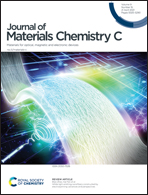High-k dielectrics for 4H-silicon carbide: present status and future perspectives
Abstract
Owing to its superior material and electrical properties such as wide bandgap and high breakdown electric field, 4H-silicon carbide (4H-SiC) has shown promise in high power, high temperature, and radiation prone environments. After success in silicon-based technology, metal–insulator–semiconductor (MIS) devices seem to be the obvious choice for 4H-SiC technology as well, due to the availability of its native insulated oxide (SiO2). However, the use of SiO2 in 4H-SiC technologies is not an ideal choice due to the poor quality of the SiO2/4H-SiC interface and the low dielectric constant of SiO2, which compromise the performance of 4H-SiC devices under high electric fields. Therefore, to exploit the superior properties of 4H-SiC, substantial efforts are being made to overcome this issue by using high-κ dielectrics such as Al2O3, AlN, HfO2, Ta2O5, Y2O3, ZrO2, TiO2, CeO2, and their combinations in layered stacks. This paper assesses the current status of these dielectrics and their processing in terms of types of dielectric (and their stacks), pre-deposition treatments, deposition methods, post-deposition treatments, and their viability in actual devices. Based on an extensive survey of the structural, electrical, and interfacial characteristics, a future perspective of high-κ dielectrics on 4H-SiC devices is provided.

- This article is part of the themed collection: Journal of Materials Chemistry C Recent Review Articles


 Please wait while we load your content...
Please wait while we load your content...